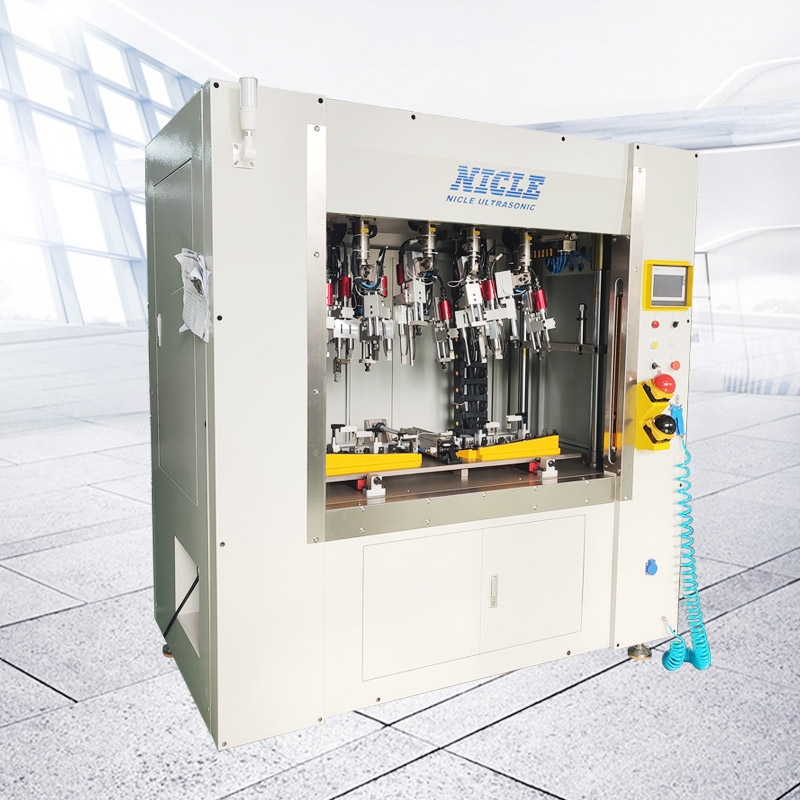This article focuses on how manufacturers manage lead times, quality failures, and engineering change requests (ECR/ECO) in ultrasonic welder machine production. It combines proven industry practices and structured strategies to give a clear, actionable risk control framework.
Introduction: The Sources and Significance of Risk
Ultrasonic welder machine manufacturing involves multiple disciplines—mechanical engineering, control systems, welding technology, and quality assurance. Each stage can introduce uncertainties that lead to three critical challenges:
-
Lead time delays – Supply chain disruptions or process inefficiencies can push back schedules.
-
Quality failures – Tool wear or parameter drift can cause defective welds.
-
Engineering change requests (ECR/ECO) – Design updates or customer feedback can disrupt production and raise costs.
Let’s break down how manufacturers mitigate these risks effectively.
1. Controlling and Optimising Lead Times
1.1 Supplier and Supply Chain Management
-
Select local or proven suppliers: Local vendors shorten transport time, reduce timezone communication issues, and allow closer quality oversight.
-
Improve supplier collaboration and forecast sharing: Share sales forecasts and purchase plans regularly. Use vendor-managed inventory (VMI) and reduce supplier count for better responsiveness.
1.2 Process Streamlining and Automation
-
Advanced scheduling systems: Deploy finite capacity planning software to simulate “what-if” scenarios, optimise job sequencing, and maximise machine utilisation.
-
Lean and Quick Response Manufacturing (QRM): Create QRM cells, use small batch sizes, and encourage cross-functional collaboration to cut internal and external lead times.
1.3 Digital Workflow Integration
-
Digitise operational workflows: Replace manual sign-offs and paper-based tracking with real-time dashboards, alerts, and automated status updates.
-
Empower teams for rapid decisions: Use daily stand-ups and visual management boards to allow frontline teams to resolve issues without excessive approval layers.
2. Reducing Quality Failures
2.1 Preventive and Reliability-Centred Maintenance (RCM)
-
Reliability-centred maintenance: Conduct Failure Mode and Effects Analysis (FMEA) to identify risks, schedule proactive tool changes, and monitor equipment conditions.
-
Predictive maintenance (PdM): Use vibration data, thermal sensors, and machine learning to forecast tool or equipment failure before it disrupts production.
2.2 Tool Care and Wear Management
-
Scheduled servicing and surface treatments: Apply titanium nitride coatings to extend horn life and inspect alignment regularly to avoid premature failures.
-
Automated monitoring and tuning: Use automated horn conditioning and vibration tuning systems to maintain consistent performance.
2.3 Statistical Process Control (SPC) and Non-Destructive Testing (NDT)
-
SPC monitoring: Track weld parameters like energy and time in real-time, detecting deviations early to prevent non-conformance.
-
Prototype testing and NDT: Validate weld integrity using tensile testing, microscopic inspection, or automated optical systems.
2.4 Continuous Improvement and Quality Culture
-
Error-proofing (Poka-yoke): Introduce fixtures or sensor checks that prevent incorrect setups.
-
Layered quality audits: Move inspection points upstream and perform periodic process audits to reduce rework.
3. Engineering Change Request (ECR/ECO) Management
3.1 Structured and Transparent Change Process
-
Formal ECO procedure: All changes go through documented requests, impact assessments, and formal approvals. Maintain detailed records of modifications and responsibilities.
-
Cross-functional change boards: Include engineering, procurement, quality, logistics, and product management to evaluate and approve changes quickly.
3.2 Early Tracking and Impact Visibility
-
Log potential changes early: Even if informal, record and assign responsibility before issues escalate.
-
BOM impact analysis: Maintain a list of affected parts and share it across departments to avoid oversight.
3.3 Accountability and Deadline Management
-
Clear ownership: Assign each stage of the change—from identification to implementation—to specific individuals or teams.
-
Milestone-based tracking: Set deadlines for approval, procurement, and production updates to prevent schedule drift.
3.4 Digital Tools and Traceability
-
Centralised change management systems: Store the latest specifications, approvals, and revisions in one accessible platform.
-
Digital thread integration: Link requirements, designs, changes, and production data for full lifecycle traceability.
3.5 Post-Change Review
-
After-action review: Evaluate results, delays, and lessons learned for future process optimisation.
-
Culture of adaptability: Treat change as an improvement opportunity, encouraging team members to suggest and embrace refinements.
4. Combined Risk Mitigation Framework
| Risk Type | Key Mitigation Strategies |
|---|---|
| Lead time delays | Local suppliers, QRM cells, advanced scheduling, digital workflows, empowered teams |
| Quality failures | RCM + PdM, scheduled tool care, SPC & NDT, error-proofing, layered audits |
| Engineering changes | Formal ECO process, cross-functional boards, BOM tracking, digital thread, post-change review |
Conclusion: The Core Elements of Risk Mitigation
-
Collaboration and transparency: Seamless information flow from suppliers to engineering and production teams.
-
Systematic processes: Embed lead time control, quality assurance, and change management into formal workflows.
-
Digital enablement: Use scheduling software, change management platforms, and integrated data systems to improve efficiency.
-
Prevention over correction: Invest in predictive and preventive measures to avoid costly delays or rework.
-
Continuous improvement culture: Foster a mindset where problems are addressed proactively and improvements are welcomed.
By applying these strategies, ultrasonic plastic welder manufacturers can better manage production timelines, minimise quality risks, and adapt quickly to design changes—ultimately improving efficiency, product reliability, and customer satisfaction.
